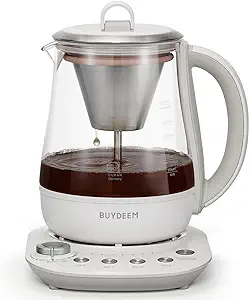Coffee enthusiasts always look for ways to elevate their daily brew. Whether you’re a novice or a seasoned barista, improving the taste of your coffee can make a world of difference. In this blog post, we’ll explore various tips and techniques that can help you brew the perfect cup of coffee right at home.
Why Coffee Quality Matters
The quality of your coffee directly impacts its flavor. Good-quality beans produce rich and complex flavors, while poor-quality beans can result in a bitter or bland taste. Choosing high-quality beans is the first step to making your coffee taste better.
The Importance of Fresh Beans
Freshness is key when it comes to coffee beans. Freshly roasted beans have a much richer flavor compared to stale ones. Always check the roast date on the packaging and buy beans that have been roasted within the last two weeks.
Storing Your Beans Properly
How you store your coffee beans also affects their freshness. Keep your beans in an airtight container away from light, heat, and moisture. This will help preserve their flavor and aroma for a longer period.
Grinding Just Before Brewing
Grinding your beans just before brewing can significantly improve the taste of your coffee. Pre-ground coffee loses its flavor quickly, so invest in a good quality grinder and grind only what you need for each brew.
Mastering the Art of Brewing
Brewing coffee is both an art and a science. Several factors influence the final taste of your coffee, including water quality, brew temperature, and brewing time.
Using Filtered Water
Water makes up about 98% of your coffee, so using high-quality water is essential. Tap water can contain impurities that affect the taste of your coffee. Use filtered water to ensure a clean and pure flavor.
Getting the Temperature Right
The ideal brewing temperature for coffee is between 195°F and 205°F. Water that’s too hot can over-extract the coffee, resulting in a bitter taste, while water that’s too cold can under-extract, leading to a weak and sour flavor.
Timing Your Brew
The brewing time also plays a crucial role in determining the taste of your coffee. Different brewing methods require different times, but as a general rule, aim for a brewing time of 2-4 minutes for a balanced flavor.
Exploring Different Brewing Methods
There are several brewing methods to choose from, each offering a unique flavor profile. Experimenting with different methods can help you find the one that best suits your taste preferences.
The Classic Drip Coffee Maker
A drip coffee maker is a convenient and popular choice for many coffee lovers. It produces a consistent and balanced cup, making it a great option for everyday use. Make sure to use the correct coffee-to-water ratio for the best results.
French Press for a Bold Flavor
The French press is known for producing a rich and full-bodied coffee. This method allows the coffee grounds to steep in water, extracting more oils and flavors. Use a coarse grind and steep for about four minutes for optimal taste.
Pour-Over for Precision
The pour-over method offers precise control over the brewing process, allowing you to adjust variables like water temperature and pouring technique. This method produces a clean and bright cup of coffee with distinct flavors.
Choosing the Right Coffee Beans
The type of coffee beans you choose can significantly impact the taste of your coffee. There are two main types of coffee beans: Arabica and Robusta.
Arabica vs. Robusta
Arabica beans are known for their smooth and complex flavors, while Robusta beans have a stronger and more bitter taste. Arabica beans are generally considered higher quality and are preferred by most coffee enthusiasts.
BUYDEEM K156 Tea Maker, Electric Kettle for Coffee and Tea Brewer

- 6 Flavor Controls
- 4 Temperature Settings
- 8 Hours Keep Warm
- 1.5L
Exploring Single-Origin Beans
Single-origin beans come from a specific region or farm, offering unique flavor profiles that reflect their origin. These beans often have distinct and nuanced flavors, making them a great choice for those looking to explore different tastes.
Blends for Balance
Blends combine beans from different regions to create a balanced flavor profile. They offer a harmonious mix of flavors and are often designed to suit a wide range of preferences.
Enhancing Your Coffee Experience
Beyond the basics of brewing and choosing the right beans, several other factors can enhance your coffee experience.
Using Fresh, Clean Equipment
Clean equipment is essential for making great-tasting coffee. Residue from previous brews can affect the flavor of your coffee. Make sure to clean your coffee maker, grinder, and other equipment regularly.
Experimenting with Ratios
The coffee-to-water ratio is a critical factor in determining the strength and flavor of your coffee. A common starting point is a ratio of 1:16 (1 gram of coffee to 16 grams of water). Adjusting this ratio can help you find the perfect balance for your taste.
Adding a Personal Touch
Don’t be afraid to experiment and add your personal touch to your coffee. Whether it’s adding a pinch of cinnamon, trying a new brewing technique, or exploring different milk options, personalizing your coffee can make it even more enjoyable.
Conclusion
Making your coffee taste better is a rewarding and enjoyable process. By focusing on the quality of your beans, mastering the brewing process, and exploring different methods, you can elevate your coffee experience to new heights. Remember, the key to great coffee is experimentation and finding what works best for you.
FAQs
Q1. How long should I steep my coffee in a French press?
A1. Steep your coffee in a French press for about four minutes for optimal flavor.
Q2. What is the ideal coffee-to-water ratio for drip coffee?
A2. A common starting point is a ratio of 1 gram of coffee to 16 grams of water.
Q3. Can I use tap water for brewing coffee?
A3. It’s best to use filtered water to ensure a clean and pure flavor.
Ready to brew the perfect cup? Enjoy your coffee adventures, and happy brewing!






